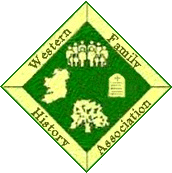The Irish Land Commission
Compiled by Seán Flanagan
The country-wide programme of land redistribution and rural resettlement in late 19th- early 20th century Ireland was overseen and managed by the Irish Land Commission (ILC). Established in 1881 under Gladstone’s Second Land Act, the core functions of the ILC were: (a) to serve as a rent fixing commission and, (b) to facilitate and subsidise transfers of land ownership from landlords to tenants. The ILC had authority for compulsory purchases and the break-up of large estates including large untenanted holdings. Its operational tasks included many complexities including the task of establishing legal title to properties.
The 1923 Land Act was enacted post-Independence by the Oireachtas of Saor Stát Éireann. It reconstituted the ILC as an agency of the Irish Free State, backdated to its establishment in 1881. Also, the Congested District Board was abolished under the 1923 Act. This Act is also known as the Hogan Act; Patrick Hogan was Minister for Agriculture 1922-32.
The obligatory requirements for repayments of ownership acquired under the Land Purchase Acts were rather similar to some present-day mortgages. Landlords were paid in land bonds which were State guaranteed. The farm property was registered in the name of the purchaser subject to an annuity payable to the ILC in two moieties annually. The debt was attached to the property and not to the owner who was free to sell the property subject to the annuity. In this way, punitive rents were replaced with reasonable annuities payable to the ILC in two half-yearly instalments.
Post-Independence, no other state body was as important to rural Ireland as the Irish Land Commission. In the acquisition and division of land, it became the principal agency for change in rural communities. However, when compared to its core functions of land purchases and resettlement, the relief of rural congestion proved to be much more complex and intractable. In the 1940s the Irish Land Commission was receiving in excess of 400,000 letters per annum, mainly from lobbyists and landless workers. The socio-political background and circumstances that prevailed post-Independence and the divisive issues that arose, positively and negatively, were reported by Dooley (2004).
A frequent criticism of the ILC was its policy of relatively small farm size dictated for owner occupiers, circa 30 acres. This policy generated continuing debate into the mid 20th century due to questions surrounding the economic viability of 30-acre farms.
Arranged migration was another feature of the ILC’s programme of land redistribution. Tenants who volunteered to transfer from congested districts in the west of Ireland were facilitated with transfers for the acquisition and ownership of land in eastern counties, such as, Meath and Kildare. In the years 1937-1978 the ILC migrated over 14,500 farmers onto lands totalling 382,000 acres in eastern counties (Dooley 2004). The ILC was abolished in 1992 under the ILC Dissolution Act.
Reference: Dooley T. Land and politics in independent Ireland, 1923-48: the case for reappraisal. Irish Historical Studies xxxiv, no. 134 Nov. 2004, 22pp. (Dept. of History, NUI Maynooth)
Sean Flanagan, November 2020.
